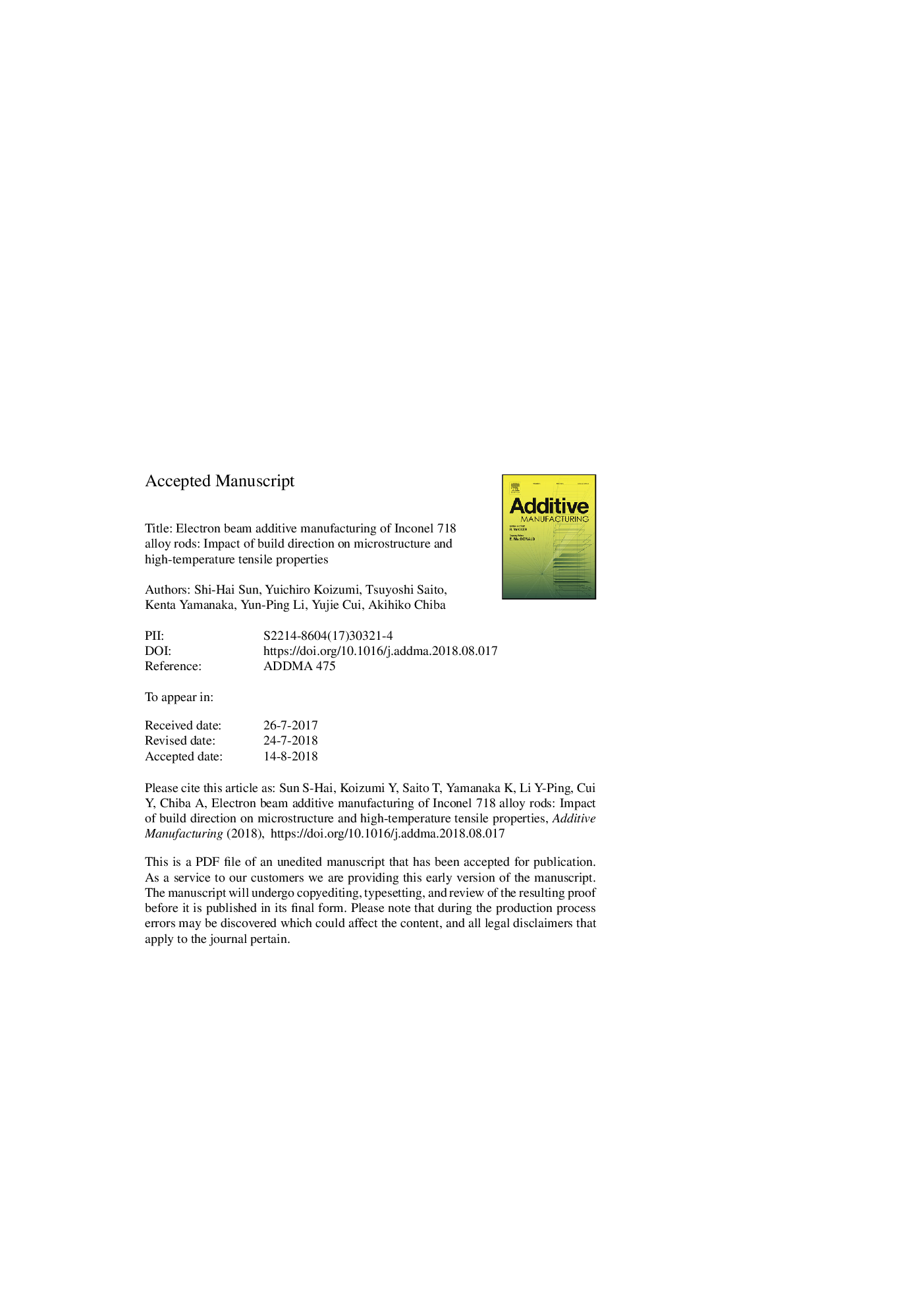| Article ID | Journal | Published Year | Pages | File Type |
|---|---|---|---|---|
| 11004151 | Additive Manufacturing | 2018 | 47 Pages |
Abstract
Inconel 718 alloy rods were fabricated by electron-beam melting (EBM), where the cylindrical axes (CAs) deviated from the build directions (BD) by 0°, 45°, 55°, and 90°. The microstructures and high-temperature tensile properties of the rods were investigated by taking into account the effect of the BD. Columnar grain structures or mixtures of columnar and equiaxed grains were obtained in the rods. The <1 0 0> direction of the grains tended to be oriented not only in the BD but also in the two horizontal EB scanning directions (SDs), which were perpendicular to each other. As a result, the crystal orientation of the rods could be controlled by appropriate choice of the CA. For instance, the rods oriented along the <1 0 0>, <1 1 0>, <1 1 1> directions could be fabricated by choosing their CAs parallel to the BD, face diagonal, and space diagonal of the cubic space defined by the BD and the two SDs, respectively. The highest strength was obtained for the <1 1 1> oriented rod. The dependence of strength on the rod orientation could be explained in terms of the anisotropies in the crystal orientation, columnar grain structure, and arrangement of the precipitate particles.
Related Topics
Physical Sciences and Engineering
Engineering
Industrial and Manufacturing Engineering
Authors
Shi-Hai Sun, Yuichiro Koizumi, Tsuyoshi Saito, Kenta Yamanaka, Yun-Ping Li, Yujie Cui, Akihiko Chiba,
